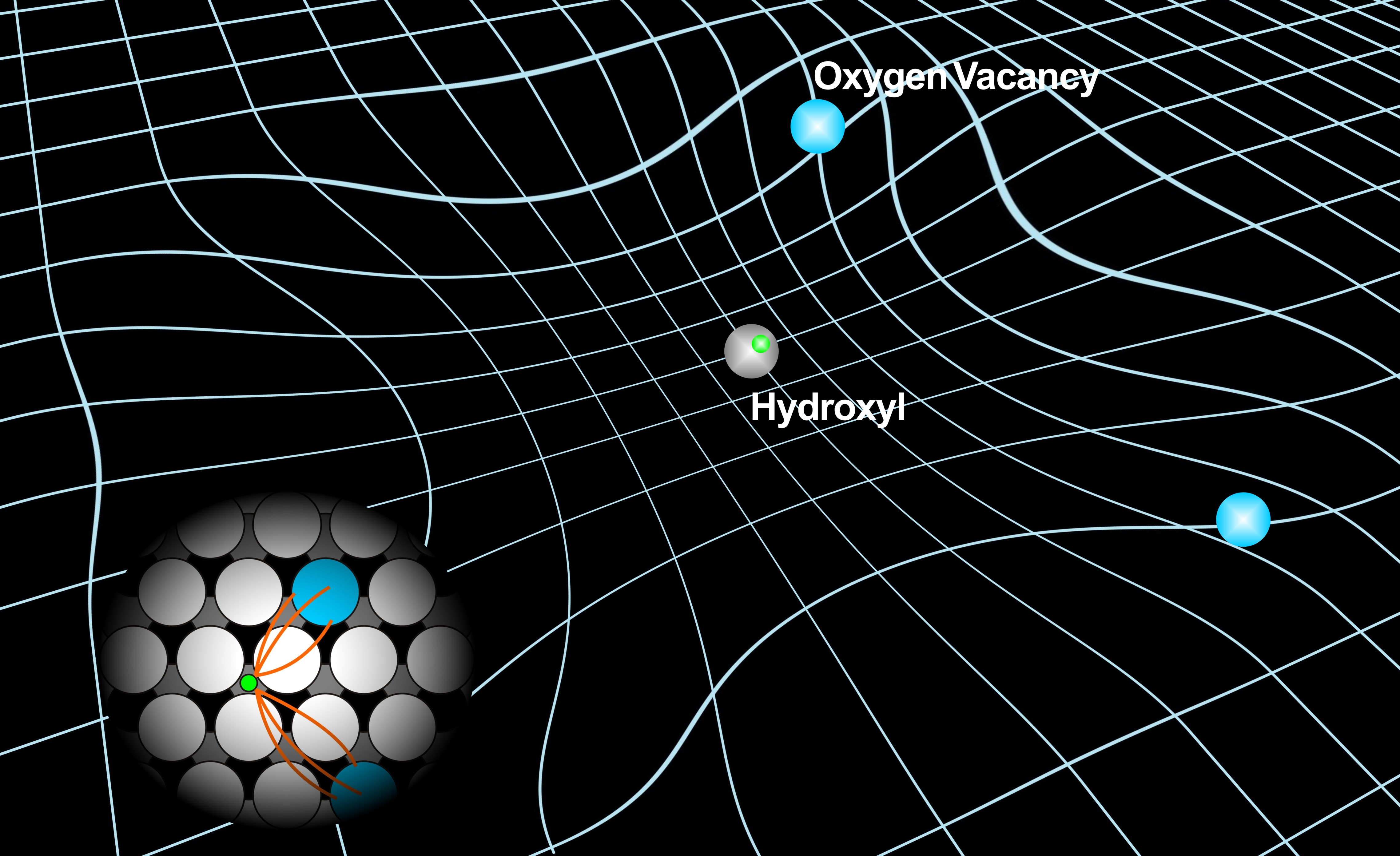Recently, a research paper of Prof. Xue-Qing Gong’s Group, “Clustering of oxygen vacancies at CeO2(111): Critical role of hydroxyls”, has been published on Physical Review Letters (Phys. Rev. Lett., 116, 086102 (2016); http://journals.aps.org/prl/abstract/10.1103/PhysRevLett.116.086102). This work was done by Xin-Ping Wu (Ph.D student in Prof. Gong’s group).
Ceria (CeO2), as a particular case of reducible metal oxides, exposes highly active surface lattice oxygen and is rich with oxygen vacancies, bringing extraordinary catalytic activities in broad applications. Over the past twenty years, atomic-resolution STM and AFM studies have been intensively conducted to image the surface defect structures of the thermodynamically most stable (111) facet of CeO2. People found that isolated surface oxygen vacancies tend to aggregate into clusters. However, follow-up theoretical studies by using DFT calculations reached consistent conclusion that clustering of surface oxygen vacancies is thermodynamically UNFAVORABLE, which brings controversy to the origin of this phenomenon.
In this work, we showed that hydroxyls play a critical role in the formation and propagation of oxygen vacancy clusters. In the presence of neighboring hydroxyls, the thermodynamically unstable vacancy clusters can be significantly stabilized, and the behaviors of oxygen vacancies become largely consistent with the STM observations. Besides the clarification of the long term controversy on the surface defect structures of CeO2(111), the “hydroxyl-vacancy model” proposed in this work emphasizes the co-existence of hydroxyls and oxygen vacancies, especially vacancy clusters, which is important for understanding the catalytic and other physicochemical properties of reducible metal oxides.

This research was financially supported by the National Natural Science Foundation of China, and the National Science Fund for Excellent Young Scholars.




